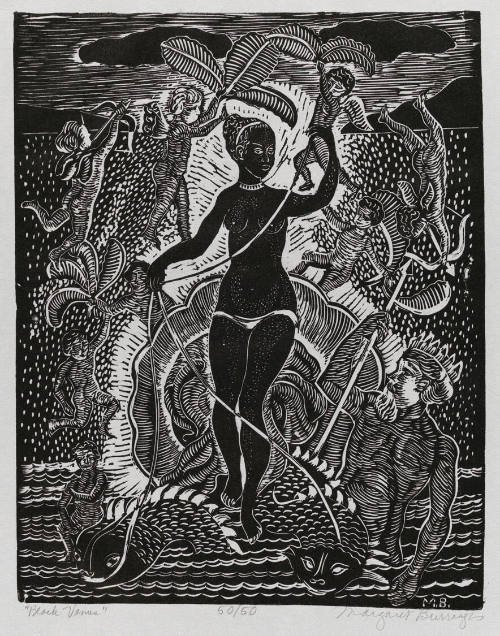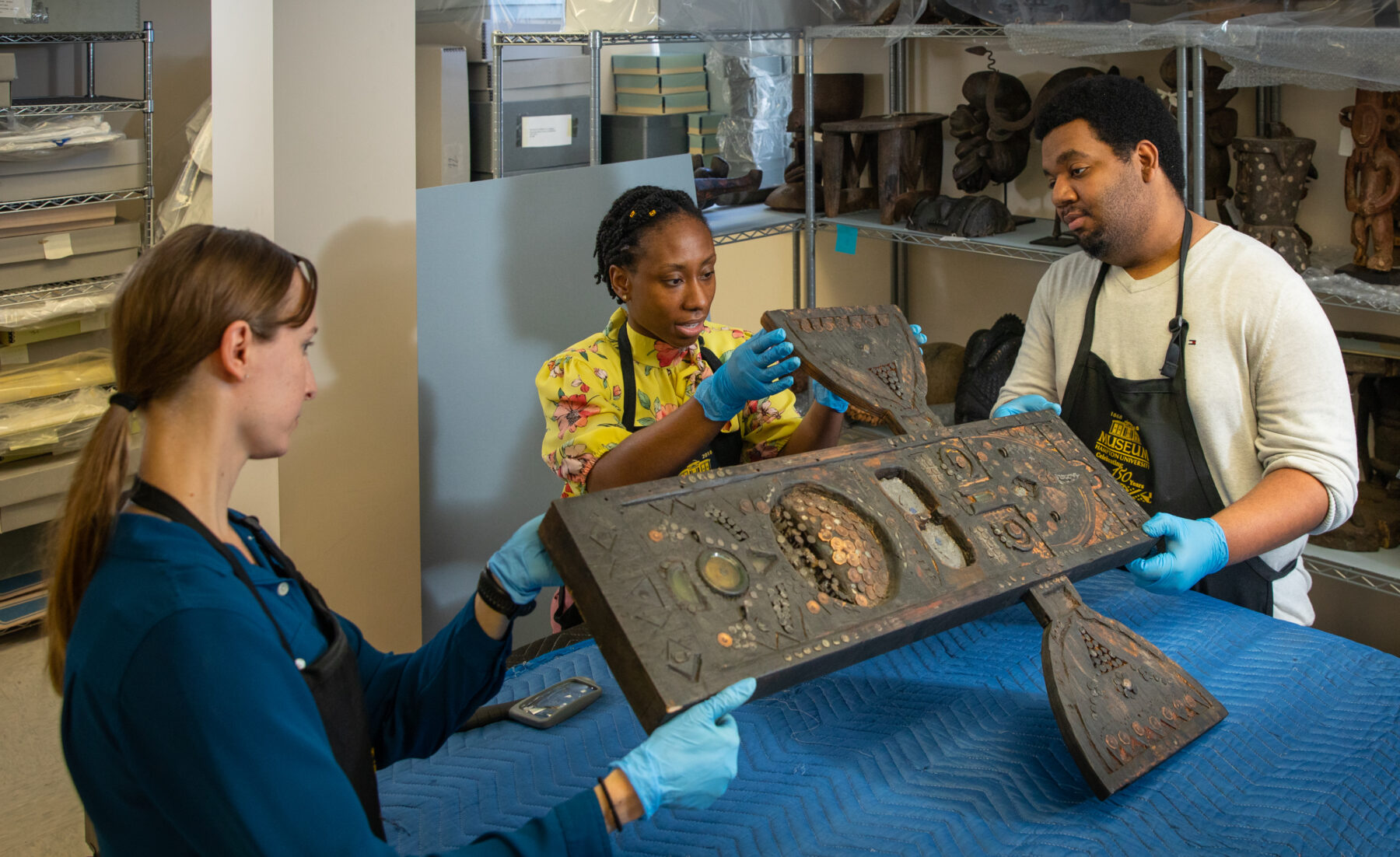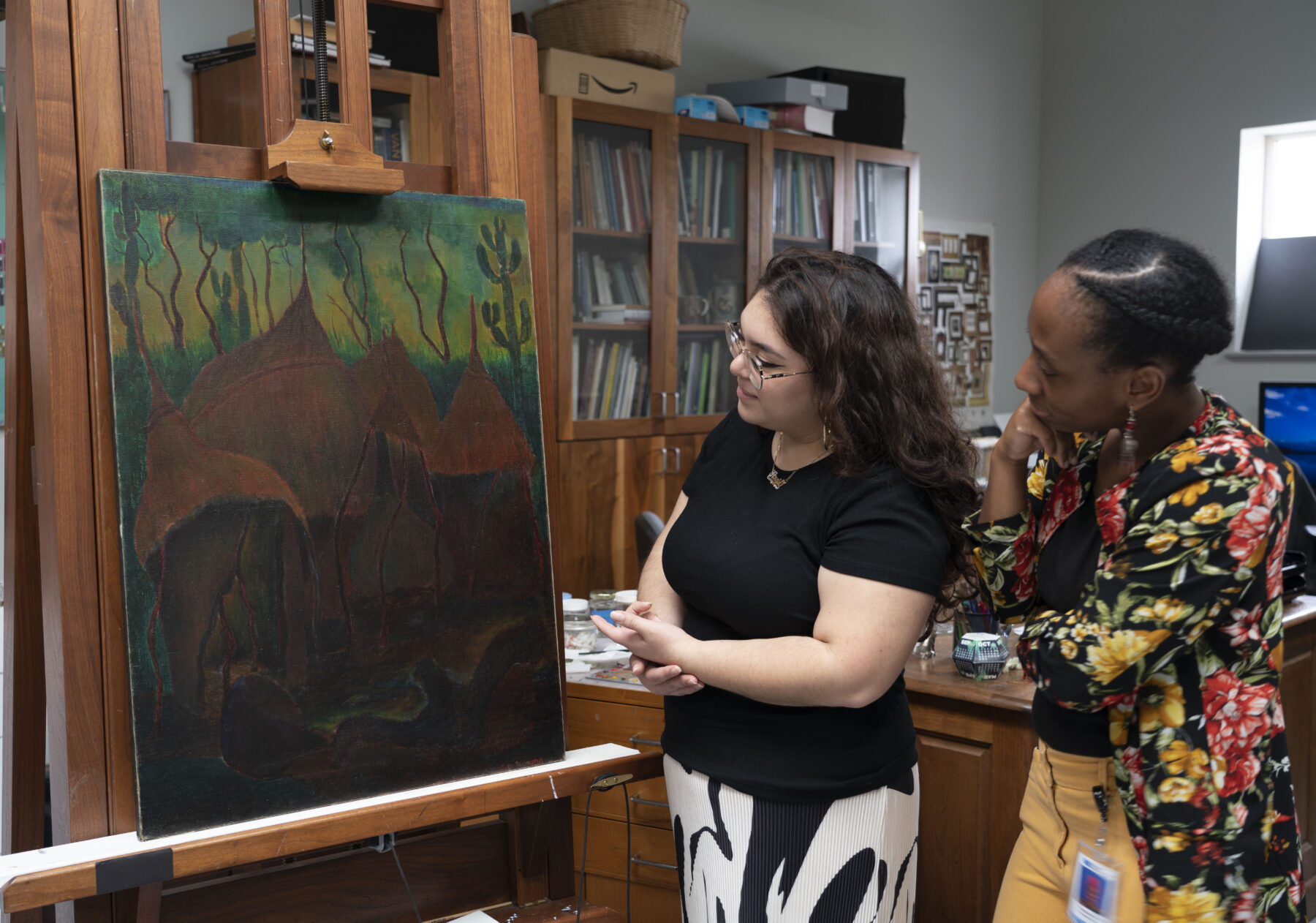Harmon Foundation Modern African Art Collection Statistics

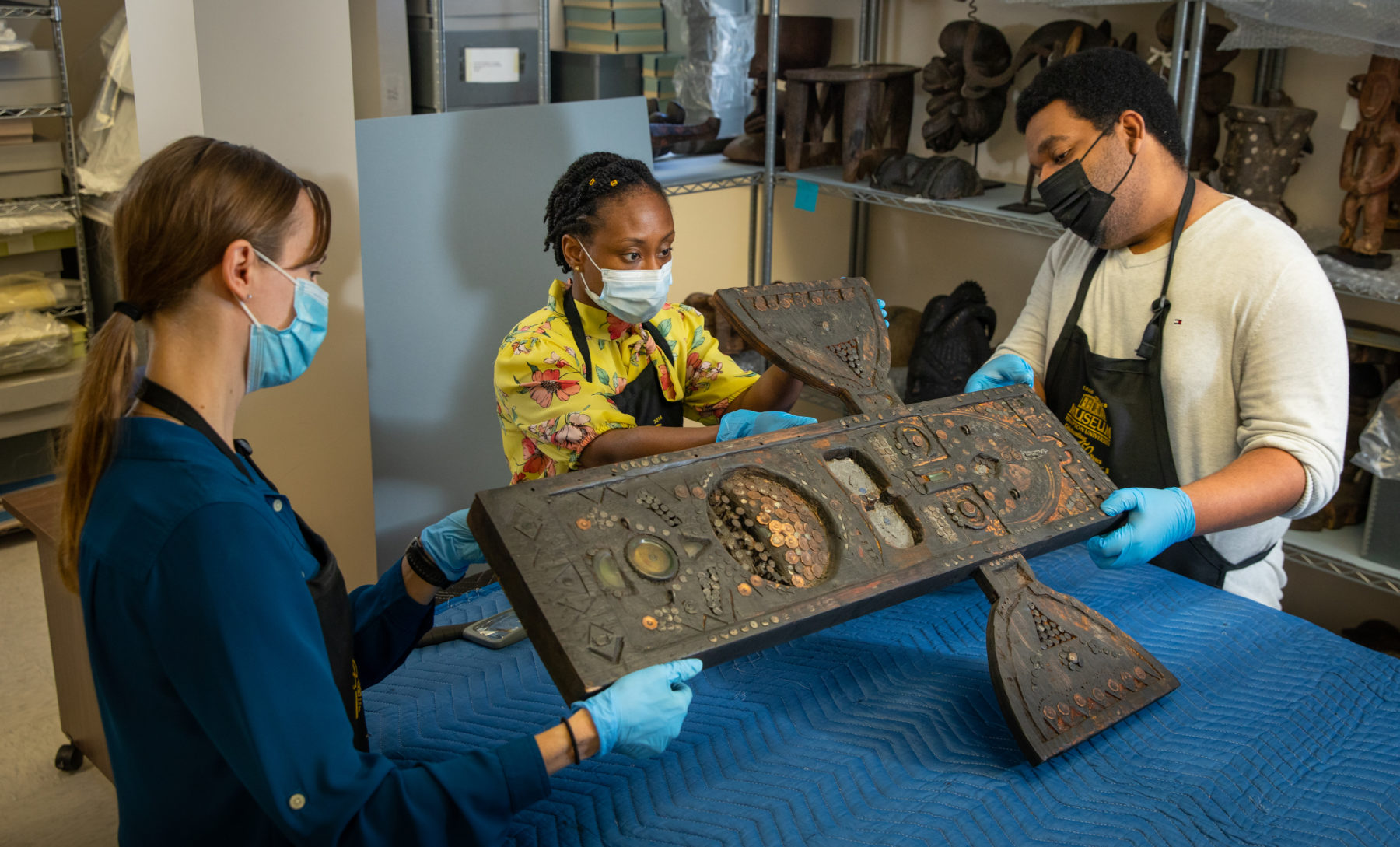
Photo by Alexander Kravets, 2022 Courtesy of the Hampton University Museum, Funding provided by The Andrew W. Mellon Foundation
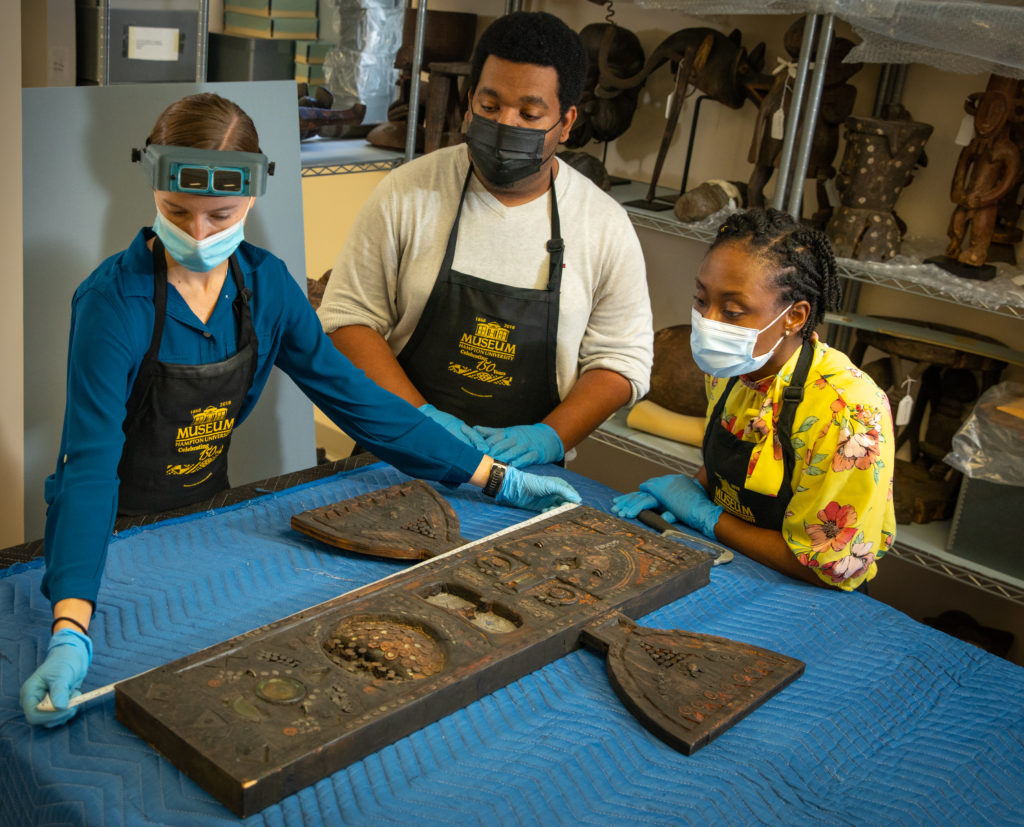
Courtesy of the Hampton University Museum, Funding provided by The Andrew W. Mellon Foundation
In the last ten months, we have surveyed 544 pieces of art in the Harmon Foundation Modern African Art collection located at Hampton University Museum! Our work of surveying the collection included measuring, writing condition reports, and taking pictures of each object. In celebration of completing our survey, we are sharing some interesting statistics about the collection. In sharing these statistics, we hope to spread more awareness about the composition of this awe-inspiring collection of art.
If you are looking to learn more information about specific artists and artworks within the collection, check out our previous posts on artist Afi Ekong and the painting A Market Day by Emmanuel Owusu Dartey. More detailed profiles of specific artists and artworks will follow in future posts.
For more information about the collection and the Harmon Foundation, read our post Origins of The Harmon Foundation and Collection.
Categories
Our survey of the Harmon Foundation Modern African Art collection found 544 artworks in total. This includes 358 works on paper, one hundred paintings on canvas or board, and eighty-six 3-dimensional objects. Almost two-thirds of the collection are works on paper, which we did not expect! As a paintings conservator, Elizabeth had to recall paper lessons from grad school, seek advice from paper conservators, and research techniques in books in order to effectively complete the survey work. The paintings are about half on canvas or burlap and half on some variety of board or panel support. Fifty-six of the objects are wood carvings, while the rest are made of metal, ceramic, gourd, ivory, stone, clay, fiber, or mixed media.
Country of Origin
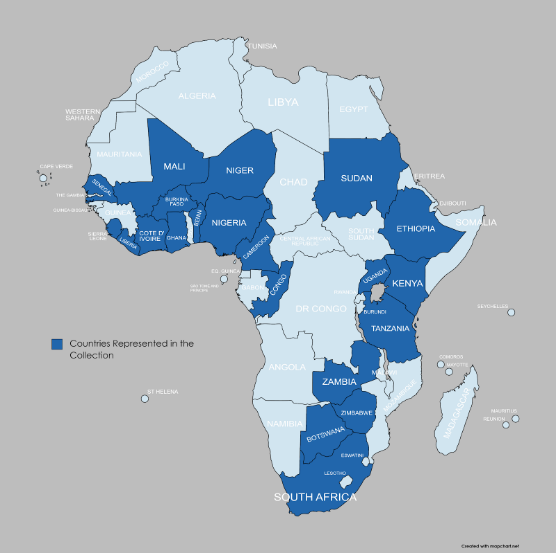
There are 21 African countries represented in the art collection (see map at right). The majority of the pieces come from Nigeria and Ghana. Other countries like Uganda, Ethiopia, Congo, Zimbabwe, and South Africa are also highly represented. Twenty-four pieces come from an unknown location, since their artists are currently unidentified. The origins of the artworks are quite broad, from the northwest coastal Senegal, east to Ethiopia, and all the way down to South Africa.
Artists in the Collection
A large portion of the collection (118 works) are student artworks, which come from several different schools (at least six) across Africa. There are also 32 “Harmon Craft Items”, which are mostly wood carvings and ceramics. In total, the collection has 59 individual artists, of which Emmanuel Owusu Dartey has the greatest number of artworks at seventy-six, followed by Akinola Lasekan, with sixty pieces. Both of these artists used a wide variety of media, and sent their works to the Harmon Foundation in the hopes that Harmon would market their pieces in order to attract potential buyers.
Dates of Artworks
About 30% of the artworks in the collection are dated, while the rest do not have known creation dates. All of the pieces were completed before 1967, the year the Harmon Foundation closed its doors and dispersed the artworks under its care to other institutions. The earliest dated pieces are a pair of student artworks from 1933. Ten of the other student artworks from the same school were reportedly done in the late 1920s up to 1940. The latest pieces in the collection are nine works dated 1965. Overall, the dated works are concentrated around the late 1950s and early 1960s, with the greatest number, 32 pieces, having been completed in 1961. Therefore, we can reasonably assume that the rest of the undated artworks were also most likely created between 1930 and 1966.
Explore other articles like this
Diving into the Waters of The Black Venus
In her 1957 linoleum print, "Black Venus," Margaret Burroughs reimagines historical depictions of Black women, transforming narratives of exploitation into ones of resilience and empowerment. Her work challenges past portrayals and honors the Black female form.
The Andrew W. Mellon Fellowship: Now and Beyond
In this post, I will highlight some of the accomplishments of this project and address two main takeaways that can help those looking to reproduce a similar fellowship program.
Art Spotlight: The Abandoned Hut by Mordecai Buluma
In this blog post Angie and Tashae discuss the symbolism behind The Abandoned Hut by Mordecai Buluma as well as the conservation treatment used to prepare it for exhibition.
